#BatteryMonitoring
Explore tagged Tumblr posts
Text
Why the Alber Cellcorder Is Essential for Battery Monitoring and How Critical Power Systems Can Help
In today’s data-driven, always-on world, reliable power isn’t a luxury—it’s a necessity. Whether you're managing a data center, industrial facility, or telecom infrastructure, battery health is critical to maintaining uptime. One of the most trusted tools for battery maintenance and testing is the Alber Cellcorder—a reliable, accurate, and field-proven device that professionals rely on.
At Critical Power Systems, we understand the value of power continuity and are proud to support facilities with the best power testing solutions, including the Alber Cellcorder. Let’s explore why this device is so important and how your organization can benefit from its use.

🔍 What Is the Alber Cellcorder?
The Alber Cellcorder CRT-400 is a portable handheld battery testing device designed specifically for the measurement of battery cell voltage, internal cell resistance (or conductance), intercell connection resistance, and ambient temperature. It's a go-to instrument for engineers and technicians who want a quick, non-invasive, and highly accurate assessment of a stationary battery system’s health.
Its rugged design and intuitive operation make it ideal for use in critical environments such as:
Data centers
Hospitals
Power utilities
Telecommunication hubs
Industrial facilities
⚙️ Key Features of the Alber Cellcorder
Here’s why the Alber Cellcorder stands out in the world of battery testing tools:
Accurate Readings: It delivers consistent measurements for voltage, resistance, and temperature, helping you spot deteriorating cells before they fail.
User-Friendly Interface: Simple menus and fast setup make it easy to use, even for non-specialists.
Data Logging: Stores hundreds of measurements for downloading, analysis, and reporting.
PC Connectivity: The device easily connects to a PC for full data management using Alber's Battery Analysis Software.
Durability: Built to withstand industrial environments and frequent handling.
🧰 Why Use the Alber Cellcorder?
Unmonitored or aging batteries can become the single point of failure in your power system. With the Alber Cellcorder, you can:
Prevent Outages: Early detection of weak or failing cells helps prevent power loss during critical operations.
Save Costs: Replacing only failing cells instead of entire battery banks significantly reduces maintenance costs.
Ensure Compliance: Many regulatory bodies require routine battery testing—this tool makes compliance easy.
Enhance Safety: Proactively identifying battery issues reduces the risk of thermal events or acid leaks.
🛠️ Partner with Critical Power Systems
As a trusted supplier of backup power solutions, Critical Power Systems not only provides top-of-the-line equipment like the Alber Cellcorder, but also offers expert consultation and support to help your facility maintain peak performance.
Whether you need a new unit, maintenance support, or training on how to use battery testing tools, we’re here to assist. We work with power professionals across industries, ensuring their critical systems stay running 24/7.
Visit https://cpsystems.net/ to learn more about our product lineup or to get a custom quote tailored to your facility’s power monitoring needs.
📈 Don’t Wait for Battery Failure—Act Now!
Your backup power system is only as strong as its weakest battery. With the Alber Cellcorder from Critical Power Systems, you gain peace of mind and proven performance. Make your battery monitoring smarter, safer, and more efficient starting today.
#AlberCellcorder#BatteryMonitoring#CriticalPowerSystems#BatteryTesting#PowerBackupSolutions#UPSMonitoring#BatteryMaintenance#PowerSystemReliability
0 notes
Video
youtube
Never Get Stranded Again The ANCEL BM200 Battery Tester Full Review
#youtube#CarBatteryTester ANCELBM200 AutomotiveMaintenance BatteryMonitor BluetoothCarTools VehicleDiagnostic BatteryHealth CarTech PreventativeCarMa
0 notes
Text
OptiMate's winter battery saving tips
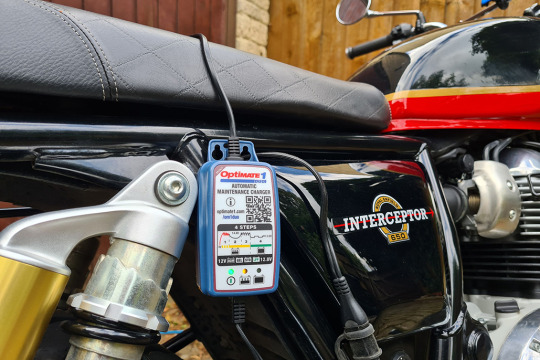

Don’t get left out in the cold OptiMate, the battery-saving experts, offer four essential tips to keep your motorcycle battery healthy until spring. Motorcycle batteries lose a lot of their cranking power in colder weather, making failure much more common during the winter months. As the temperature drops, the chemical reaction inside the battery slows down, significantly reducing its capacity and ability to turn over the engine; at 0°C even a fully charged battery can lose around a third of its starting power. Colder weather also increases the energy needed to crank the engine, leading to a double whammy of reduced power and higher energy demand. Factor in the increased use of lights and accessories, like heated grips and clothing, and your bike’s battery faces serious pressure. Battery failure - an unwelcome and expensive event at any time of year - can be prevented with a few simple steps and the right approach to maintenance. OptiMate, the battery saving experts, share four essential tips to help keep your battery in good health until spring.
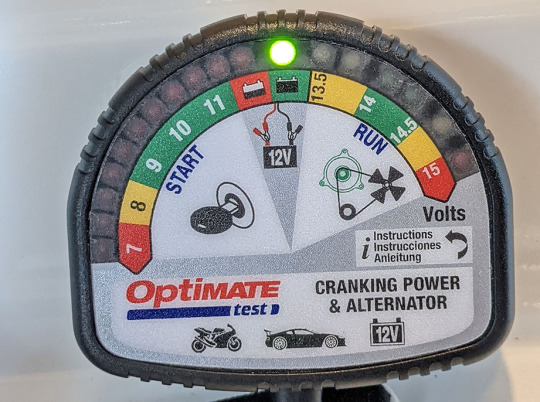
Age Older batteries are more susceptible to failure during the winter months, since they already have reduced capacity due to the ageing process. If your bike’s battery is four years old or more, you should consider replacing it with a new unit, even if the existing one appears healthy. And if you plan on running accessories like heated grips and clothing, it’s worth upgrading to a higher power unit, to compensate for the increased pressure it will be under. You can check the state of your battery using a voltmeter or, if you prefer something simpler, the OptiMate TEST gives an instant readout and can also be used to test the charging system. Environment Batteries perform better and last longer if they’re kept at a stable temperature. For bikes stored in unheated garages or sheds, an indoor cover will help prevent condensation and provide some insulation. Motorcycles kept outside need a waterproof and breathable cover to minimise the difference between day and night time temperatures around the battery. For bikes parked outdoors for long periods between use, taking the battery out of the bike and keeping it indoors on a maintainer will prolong its lifespan, but only do this if the bike isn’t fitted with an alarm or tracker. Use Short journeys may not be enough to keep your battery in a healthy state of charge - in fact they may actually do more damage than good. This is because the length of time the alternator has to recharge the battery may not be enough to offset the energy cost of starting the engine and powering on-board electrical equipment during the trip. To keep your battery in a healthy state of charge, make sure you go on longer trips regularly; ideally at least 10-15 miles at or around motorway speeds. Charging If you don't use your bike very often through the winter months - or plan to hibernate it until spring - charge can be lost to alarms and immobilisers, clocks and on-board computers, as well as through self-discharge. The battery uses a little of its own energy every day to keep itself alive. Connecting your motorcycle to a battery charger/maintainer, like the OptiMate 1 Duo, will ensure the battery remains fully charged through the winter season, ready to start up in the spring, as well as extending its lifespan.
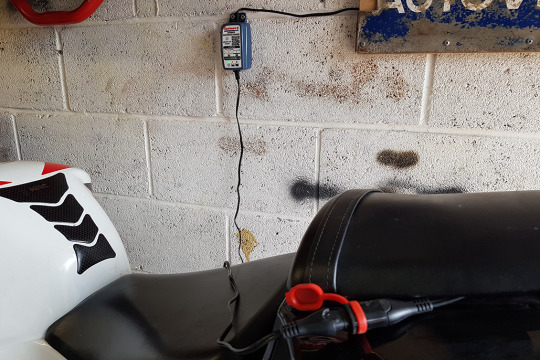
Read the full article
0 notes
Text

Stay on top of your energy usage with battery monitors. We provide real-time insights. Join us to monitor and manage your power effectively! For #BatteryMonitors, click: https://solarandbatteriesdirect.com/product-category/battery-monitors/
0 notes
Text
EV Rides provides management services for electric vehicle fleets that help businesses optimize driver performance and reduce operating costs. Our services include analyzing fleet data, providing insights into driver behavior, and real-time monitoring of battery levels for efficient route planning. Visit https://evrides.in/ to learn more about how their services can benefit your business.
Smart Mobility AI Vehicle routing Electric Vehicle Monitoring
#TRiDE Mobility - EV Rides#EVRides#electricvehicles#fleetmanagement#driverperformance#energyefficiency#dataanalysis#batterymonitoring#routepanning#costreduction
1 note
·
View note
Photo

#Bluetooth battery monitor with #IOS and #android app. An add on worth installing on your ride. DM us if you would like one for yourself, currently taking orders for 1st batch. Or feel free to request for a demo on our existing set. #batterymonitor #batterymonitoring #12v #wireless #smartphone #crankingtest #chargingtest #voltagetest ⚡ #ble #realtime #lowchargealert #cardoctor #cardoctorsingapore #cardoctorsg #CDSG (at Car DoctoR) https://www.instagram.com/p/B_xVln-lc0-/?igshid=r86b7mlmfh9b
#bluetooth#ios#android#batterymonitor#batterymonitoring#12v#wireless#smartphone#crankingtest#chargingtest#voltagetest#ble#realtime#lowchargealert#cardoctor#cardoctorsingapore#cardoctorsg#cdsg
0 notes
Text
Phone functionality, charging usability, battery life and battery longevity

For more than ten years, smartphones have confidently dominated in popularity in the consumer electronics segment. Of course, companies adequately respond to demand by offering a huge assortment of different models in all price segments. Today, more than 600 companies design and manufacture these devices. But almost 80% of the global market belongs to only 10 companies. This list includes South Korean Samsung (19%) and LG (3%), American Apple (12%), Finnish Nokia (1%) and Chinese Huawei (13%, including Honor), Xiaomi (9%), Oppo (9%), Vivo (8%), Lenovo (3%, including Motorola), OnePlus(1%), and Tecno (1%). As a result, this situation provoked an unprecedented competition level, forcing companies to invest huge resources in innovative technologies. In turn, innovation provides an extension of functionality, which is traditionally one of the essential components of the competitiveness for any device. As a consequence, the phone quickly transformed into a pocket PC with excellent media capabilities. Projector mobile phones with a projector function, cameraphones with a complex but highly effective digital image processing, liquid-cooled gaming smartphones perfectly illustrate this trend.

As a result, the companies constantly improve specs of their components, including screen resolution and size, processor performance, etc. The performance of the latest Kirin 990 5G or Qualcomm Snapdragon 855 plus processors demonstrates the swiftness of this process.
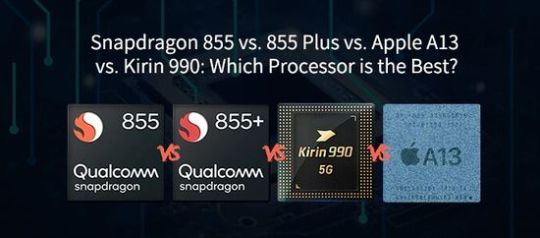
Phone longevity vs battery longevity
Unfortunately, these positive aspects have a flip side. For example, a processor and a large screen consume a lot of energy during shooting (digital processing), watching, games, etc. As a result, companies increase the battery capacity and developing energy-saving algorithms. Today, many flagships already use batteries with a capacity of 4500-5000 mAh. Moreover, the Blackview P10000 Pro uses a battery with an unprecedented capacity of 11,000 mAh.
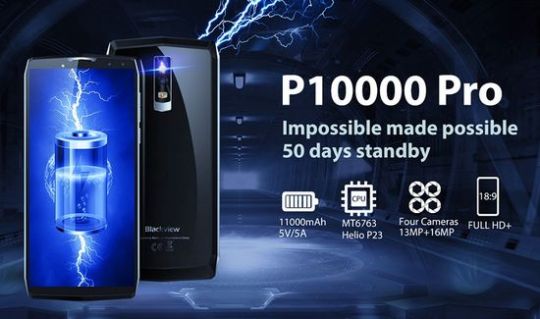
Android 10 dark theme saves up to 50% charge for OLED screens. However, modern smartphones rarely work even for one day in energy-intensive modes. As a result, the user is often forced to recharge the battery, rapidly consuming its resource (about 500 full cycles). As known, the battery degradation after 500 cycles reduces its capacity to 80%. Of course, this factor shortens battery life and increases the number of charge cycles, further accelerating its degradation. In the budget segment, the frequent change of smartphone partially compensates for this problem. Many change 200-dollar models in 1-2 years. Usually, the battery simply does not have time to completely degrade. Unfortunately, the flagships priced at about $ 1,000 change much less frequently. In addition, the non-removable batteries in recent models has further exacerbated the problem of its replacement. As a result, many owners of expensive smartphones in a year are faced with the unpleasant problem of replacing the battery. Of course, following some simple rules increases battery longevity, but does not solve the problem radically. Today, the duration of using even an mid-budget smartphone for 2-3 years significantly exceeds its battery longevity in case of active use of energy-intensive modes. But buying an expensive multifunctional smartphone just for talking is also hardly advisable. This contradiction requires a reasonable compromise.
Quick charge
Regular charging of a high-capacity battery lasts long enough, significantly reducing the model usability. A few years ago, companies realized this problem and without much fuss began to solve it. As a result, almost all large companies have developed and implemented fast charging technologies. Today Qualcomm Quick Charge is one of the leaders in this direction. However, Huawei SuperCharge, Oppo Super VOOC, etc do not lag behind the leader, offering elegant solutions. For example, Huawei uses 8-layer thermal insulation, Oppo - a parallel charge of a 2-component battery. Both solutions reduce battery heating during charging. As known, temperature above 30° C accelerates its degradation. But overall, fast charging usually shortens battery longevity. Initially, many companies considered fast charging as an opportunity to urgently recharge the phone. But this very convenient technology quickly became the dominant way of charging. Unfortunately, it has a significant drawback. Fast charging uses increased power from 18 W and above. In particular, Power Delivery 3.0 standard sets the range for voltage and current of 5 - 20 V and 1.8 - 5 A, providing maximum power up to 100W. Unfortunately, charging with increased power is accompanied by battery heating. In addition, the regular 5-watt (1A x 5V) battery recharging psychologically limits many users who do not want to spend time on long recharging. The absence of this restriction stimulates a more active use of energy-intensive modes (games, photos and video shooting, watching videos), speeding up the consumption of 500 battery charging cycles. Of course, the psychological readiness of the user to replace the battery or phone in 1-1.5 years eliminates the problem. Worse if this news comes as a surprise to him. In any case, companies are unlikely to significantly reduce the usability of their models by abandoning this technology.
The main reasons for reducing battery life
1. Battery degradation In Android models the *#*#4636#*#* combination activates the menu with the “Battery Information” item. It contains information about the battery level, temperature, etc. Settings for iPhone models with iOS version 11.3 and higher also contain similar information. 2. Using the smartphone at low temperatures or in the heat adversely affects the battery life. As a rule, specs contain data on the range of recommended temperatures.
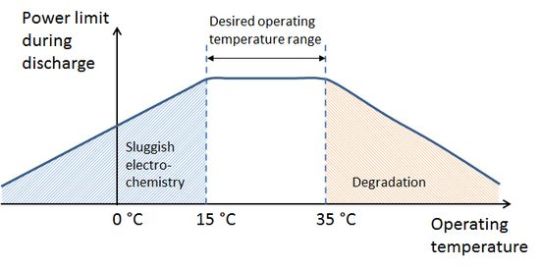
In addition, the optional case will additionally protect the phone from the cold. 3. A very bright screen with settings up to 100% quickly discharges the battery. Setting the display brightness at a level of 50-60% solves this problem. 4. Energy-intensive modes. Of course, active processor operation in games or in processing algorithms during shooting radically increases power consumption. But Wi-Fi, Bluetooth and NFC also increase the load. Deactivating them in the settings will reduce consumption. 5. Unstable cellular requires its constant search with high power consumption. In addition, the GPS sensor consumes a lot of energy even with a good signal. Deactivating it will also significantly reduce power consumption. 6. Many mobile viruses deliberately discharges the battery. An effective antivirus will easily solve this problem.
Ways to increase battery life
1. Battery calibration As a result of calibration, the phone remembers the required charge level. Today, the Internet offers several such programs, including the popular Battery Monitor. This algorithm includes the following steps: - specify the battery capacity; - install Battery Monitor; - controlling the charge level with its help, charge the battery to max; - restart the smartphone. 2. Updating the OS Typically, newer versions increase energy efficiency. Moreover, many companies, including Samsung and Apple, automatically offer updates. 3. Removing unused apps clears memory and reduces power consumption. 4. Energy-saving programs. Today they most effectively provide increased battery life by minimizing power consumption and prolonging battery longevity by monitoring its condition. The list of the most popular programs includes: - Greenify - runs in the background, disabling unused processes.

- DU Battery Saver - deactivates background processes and displays battery information. A separate button disables any energy-intensive utilities;
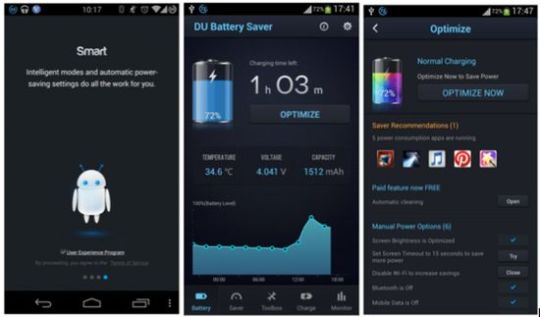
- Amplify Battery Extender - automatically disables all unnecessary processes and has manual settings; - GO Battery Saver - has several profiles to reduce power consumption.
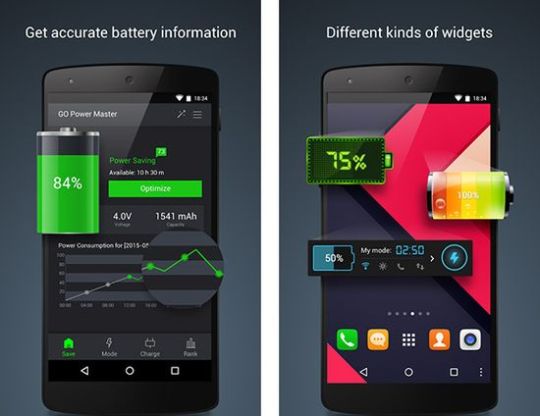
Conclusion
Limited use of energy-intensive modes, periodic calibration, cleaning the memory, OS upgrade, effective antivirus program, and energy-saving programs will extend battery life. An optimal charge level in the range of 40-80% and a reasonable restriction on the use of fast charging to prevent overheating will increase battery longevity. Ideally, the battery longevity will be equal to the phone usage period, eliminating the need to replace a non-removable battery. But, of course, a little share of German pedantry will increase the efficiency of these simple recommendations. This video shows the battery calibration on rooted Android phone. Read the full article
#AmplifyBatteryExtender#batterycalibration#batterylife#batterylongevity#BatteryMonitor#DUBatterySaver#GOBatterySaver#Greenify#HuaweiSuperCharge#OppoSuperVOOC#PowerDelivery3.0#QualcommQuickCharge
0 notes
Photo

Back again @DCW #batterymonitoring @CellWatch #exhibitionattendance (at ExCeL London)
0 notes
Text
GNUstep exotic Desktop Architecture
GNUstepを使って感じた所感・気になった点をリストアップしたい。GNUstepはAppleに買収される前にNeXTが開発していたOSであるNeXTSTEPのLinuxにおけるクローンである。
WindowMakerは右クリックメニューでアプリケーションメニューを出す方法を習得しないとまともに使えない 、このメニューからアプリケーションを起動してアイコンをDockに追加していくと使いがいがあるようになる
右クリックはトラックパッドのタップの場合はMacの副ボタンのクリックの置き換えなので片側の指を押さえながらもう片方の指でタップすると右クリックが出来る、その向きがダメなら逆向きの指使いでやってみるとうまくいくかも、私の環境では右クリックのタップは感度が悪いようであるため複数回試行してみると良いかも
インストールは例としてUbuntu LinuxならUbuntuソフトウェアセンターから普通に一般的なメタパッケージとしてパッケージマネージャからインストール可能である
シングルユーザモードで自動ログインでWindowMakerデスクトップ環境をインストールしてログインすると別のデスクトップ環境にログインを切り替えることが出来なくなるため、必ず自動ログインを外してからWindowMakerにログインすること
間違えて自動ログインでログインした場合は他のデスクトップ環境の設定パネルをコマンドなどで出して自動ログインを切ること、root権限が必要なら設定パネルのコマンドをsudoを使って起動すること
GNUstepはデスクトップ環境であるが、GWorkspaceワークスペースだけでも別のデスクトップ環境中でも動作する、これはOPENSTEPのEnterpriseに相当する、���プリは他のLinuxのデスクトップ環境中でもワークスペースなしでも単独でも動作する
GNUstepはよく考えられて作られている、Linuxとの融合を考えて作られている、NeXTやApple的な手法も踏襲しつつLinuxの手法に合わせて作られている
GWorkspaceはデスクトップの部分を担うが、ウィンドウマネージャであるWindowMakerとは分けられている
音量の表示はデフォルトでは無い、Volume Controlはインストールして装備すべきと思うが、私の環境ではこのアプリの音量の調節機能は動作しない、GNUstepにはオーディオ・ノーマライザが装備されていると言う話もあるが、真偽の程はわからない
LinuxのALSAmixerも使えるみたいだが(本当にALSAで音声が制御されているなら)、ALSAmixerは/usr/bin/のディレクトリをファイルブラウザで開いてバイナリを特定して端末で実行すればTUI【GUIのような端末画面】の画面が出るため、矢印キーでラインを選んで矢印キーで調節すれば良い
動画再生ソフトはないため、LinuxのParoleなどと組むのが最適か、動画が低解像度でParoleだと縁が汚いならVLCのほうが良い
マルチデスクトップ機能は単純な構成ながらも先進的、Spacesのようなマルチデスクトップ機能であり、Misson Controlのように新しいデスクトップを足す機能すら用意している
右クリックはタッチパッドだと難しい、マウスがあったほうが良いか、もともとタッチパッドの感度が悪い、トラックパッドクリックではなくタップを習得したほうが良いのかも、でもそれでも使いにくい所もあるか
実装や操作感を容易にするためウィンドウの全画面表示は無いが、アプリケーションの機能としての全画面はサポート
全画面化を装備していないのはマルチウィンドウ方式においては前面に出る全画面ウィンドウがあると他のウィンドウの操作性が落ちるからである、Mac OS Xのようなデスクトップを新規に割り当てるフルスクリーンアプリケーションの機能が装備できないためこのような実利的な設計になっている
画面のスクリーンセイバーはXScreenSaverか、ロック画面もXのものか、表示は汚いが取りあえず使える、私の環境だと複数のデスクトップ環境のロック画面が多重で出るが、サスペンドでロックするためにはX ScreenSaver Preferenceかで設定が必要か
システムの設定を破壊すると復元が難しいため、ここが欠陥だと言える、設定はむやみにいじらないように注意すること、設定ファイル次第では設定ファイルを捨てればデフォルトに復元して戻るものもあるようだ
通知トレイのようなものは装備していない、デスクトップのアクティビティはDockで表示するようになっている、これも初期のMac OS Xの設計思想に倣ったものである
起動用のランチャのDockと最小化のDockがある、NeXTのDockのように最小化のDockにはアクティビティをチップ表示する機能がある
私の環境では文字化けを起こしている部分があるためここはテキストが読めないため使い方がわからない、文字化けのないビルドを使うしか無い
アイコンはかなり綺麗でない、結構汚いアイコンが多い、でもUNIX的であることを考えるならこれは環境への意匠としては適している
Linuxのプログラムと協調動作することがもともと想定されて作られている、GNUstepデスクトップ環境中でも(当たり前かもしれないが)Linuxのプログラムを起動可能である
バイナリは/usr/binに配置され、ホームフォルダにGNUstepフォルダを作り、その内部にApple的なフォルダ構造をとって設定ファイルなどを配置している、.plistはAppleに相当するNeXTの設定ファイルである
ウィンドウは設定次第ではAltキーを押しながらウィンドウ内ならどこでもドラッグすることが可能である(最初はこの設定がデフォルトであると思う)、これはタイトルバーに限られない
テーマは多数装備しているが、筆者はほとんど要らないと思う、システムの設定を破壊しないように注意すること、普通は弄らないほうが無難
GNUstepアプリケーションはメニューはウィンドウとは別ウィジェットである、これはアプリケーションへのコマンドならアプリケーションとして装備すべきだからである、ウィンドウにメニューを配置するならこれはウィンドウへのコマンドであるべきである、これを取り違えると正しい使いやすいGUIにならない
Linux環境であるため、ターミナルなどのCUI環境は充実しており連携して利用する
サスペンドのための方法が用意されていないため、コマンドを使ってサスペンドさせる必要がある、出来ればGUIにしたいところだがプログラミングすれば出来るのだろうか
グラフィックサーバーはNeXTのDPSのクローンとしてDisplay GhostScriptを装備し、汚いながらもon-the-flyレンダリングを実現している
LinuxのXウィンドウマネージャのようにウィンドウの位置やサイズをウィンドウに表示する機能がある
バルーンヘルプを装備することにより簡易な説明書きをユーザーが知ることが出来る、単純な説明をウィンドウやアイコンなどにつけることが出来る
WMDockとWMClipの違いがわからない、どういうふうに使い分けるのだろう、WMClipはPhoenix Desktopにおけるタスクの役割をするらしく、今使っているアプリやウィンドウをクリップするものらしい、WMDockアイコンで右クリックメニュー操作から配置できるDrawerも使うとより多くのDockのアイコンを格納できる
GWorkspaceがファイルブラウザとワークスペースの機能を兼ねているのはMacOSのFinderの手法を踏襲したもの
WindowMakerの設定は弄って使いやすくすると良い、弄ると若干実用的に使えるようになる、初期設定のままでは若干キツいかも
GNUstepはPhoenix Desktopのための人柱になるためにも作られている、そのせいもあって幾つかのところで実用的で無い、GNUstepはMac OS Xにさえ影響を与えている
シングルユーザモードで自動ログインでWindowMakerデスクトップ環境をインストールしてログインすると別のデスクトップ環境にログインを切り替えることが出来なくなるため、必ず自動ログインを外してからWindowMakerにログインすること
間違えて自動ログインでログインした場合は他のデスクトップ環境の設定パネルをコマンドなどで出して自動ログインを切ること、root権限が必要なら設定パネルのコマンドをsudoを使って起動すること
NeXTSTEPのクローンとしての著作権違反のデスクトップ環境なので法律的には問題ありだが、NeXT社は無くなっていることもありNeXT側は訴える気はないだろう
「セッションの状態を保存する」と言った感じのラベルが貼られたチェックボックスがあるので、ログアウトダイアログでこれにチェックを付ければデスクトップの状態は再ログイン時に可能な限り若干復元されるため、普通はこれは入りにしておいたほうが良い、またWindowMakerの設定でチェックを常時付ける設定にしたほうが良いだろう
TimeMon、BatteryMonitor、Volume Control、AClockは追加でインストールすること、【筆者はまだ調べていないので分からないが】最初から入るようになっているなら追加インストールは必要ない、これらも装備すれば多少役に立つだろう
無線LANの設定方法が見当たらないため、他のデスクトップ環境で設定してから背景的に引き継ぐことになるだろうか、Bluetoothは基本的に動作させるためのGUIは存在せず、バックグラウンドで動くはずのデーモンも動作しない、Apache Webサーバーのデーモンは動作する
要はDockベースで構成されていてNeXTメニューも装備した軽量なデスクトップ環境である
インストールは例としてUbuntu LinuxならUbuntuソフトウェアセンターから普通に一般的なメタパッケージとしてパッケージマネージャからインストール可能である
Phoenix GNUstepはこれらのLinux GNUstepの実用上の問題を排除して軽量で実用的なデスクトップ環境として提供されている。
NeXTSTEPの優位性に関してはNeXTSTEP Installation Demoを参照のこと。
0 notes
Photo

Battery Monitor - Smart Charger
Charge up a battery and maintain the charge with just one unit. Its built in 3 step charge allows for charging up to 90% capacity at 2.7amps, then switching to a timer controlled charge at 14.7 volts to bring the battery to full capacity and finally holds it there indefinitely with a float charge.
http://www.frost.co.uk/battery-monitor-smart-auto-charger.html
0 notes
Video
youtube
MadMatt 4WD is at it again, quizzing the boys over at Superior Engineering 4WD Retail Store on how to power up his fourby!
When you first get your four wheel drive, it's not long before you start adding electronic gadgetry like a fridge, camping lights, radios, all sorts of accessories that draw power out of your vehicle's electronic system.
So, what do you do? You install a Piranha dual battery system.
The team over at the Superior Engineering are fully versed on all of the features of the Piranha offroad systems.
Superior has everything from the actual smart blocks, batteries, battery trays, monitors, protectors, cabling and even installation.
If you want to find out about a dual battery system for your four wheel drive, make sure you head to the Superior Engineering website at https://www.superiorengineering.com.au/piranha-offroad
#superiorengineering#superior4x4#battery#battery tray#4WD#4x4#power#4wdaction#4wdtv#batterymonitor#piranhaoffroad
0 notes
Text
Updated OptiMate Battery Monitor


Weatherproof 12V battery lead and monitor, for instant checking and easy charging. Updated for 2023, the OptiMate O-124 is a combined monitor and SAE socket, giving 24/7 battery status in the blink of an LED and hassle-free charging of your motorcycle starter battery. A must for commuters, touring and year-round riders, the OptiMate O-124 gives an instant health status of any 12V AGM, STD or GEL battery, and will also confirm if the vehicle charging system is working correctly. When it’s time to top up, simply plug any OptiMate battery charger into the built-in SAE socket; no additional adaptors or leads needed. Quick and easy to set up, the O-124 connects directly to the battery terminals. It now comes fitted with ringlets that can be converted from M6 (1/4″) to M8 (5/16″), so it will fit the most commonly found sizes of battery terminal bolt.

Unlike app-based monitors, it doesn't rely on third party applications or devices, and draws almost zero power from the bike's battery; long term draw is less than 0.2mA. Fully weatherproof and rated down to -40°C, it’s completely safe to leave attached to vehicles that are parked outside. There’s also an inline 15A fuse to protect both the battery and the bike’s electrical system. The OptiMate O-124 retails at just £26.90 including VAT - a small price to pay for never being caught out by a dead battery again - and is covered by three-year warranty. For details of this and all other OptiMate products visit optimate1.com Read the full article
0 notes
Text

Monitor your battery's health and performance with our detailed battery monitors. We make maintenance simple and your system efficient. For #BatteryMonitors, click: https://solarandbatteriesdirect.com/product-category/battery-monitors/
0 notes
Text
Lithium batteries - Choose right and it will see you right


Thinking about upgrading to a lithium starter battery? OptiMate, the battery-saving experts, say it’s crucial to choose the right one if you want it to last. Lithium starter batteries are a popular upgrade from the lead-acid units most motorcyclists are familiar with. However, motorcycle riders report being let down by lithium batteries, even though they take care to maintain them. The team behind OptiMate battery chargers and maintainers first became aware of the problem after being contacted through social media by increasing numbers of bike owners who’d purchased lithium batteries, only to find them failing with no obvious reason.

The root of the problem is that lithium batteries are specified to match or exceed the CCA or Cold Cranking Amps (the power needed to turn the bike’s starter motor) of the equivalent lead-acid battery. However this results in a lower reserve capacity - measured in Amp hours (Ah) - typically half or less than the lead-acid battery it replaced. A bike needs reserve capacity for two reasons: to power 12V systems before the engine is running, and when the battery is put under extra strain, during slow, stop-start riding and when running accessories like heated grips or fog lights. So, to cope with the rigours of everyday riding, the buyer needs to make sure the lithium battery they choose has a high enough Ah reserve capacity: at least half of the 10-hr or 20-hr Ah rating of the lead-acid battery it’s replacing.

As an example, the Yuasa YTZ10S, (a suitable lead-acid battery for the Yamaha MT-09), has a CCA rating of 190 Amps and a 20-hr rating of 9.1 Ah. The lithium replacement would need a rating of at least 4.55 Ah to be able to perform in the same way. Many lithium replacements advertised for the MT-09 have a similar CCA rating, but a capacity of only 4.0Ah or even less, which is not sufficient to keep all systems running. If you’re thinking of upgrading to a lithium battery, make sure you do that homework. And remember that lithium batteries discharge faster than lead-acid, so it is important to connect it to a smart charger whenever it’s parked up between rides. OptiMate offer a range of lithium chargers and their Duo range can charge both lithium and lead acid batteries, automatically detecting which type of battery is fitted and maintaining it accordingly. For more information visit optimate1.com For more info checkout our dedicated Optimate News page Optimate News See the complete OptiMate range of chargers and monitors at www.optimate1.com. Read the full article
0 notes
Text
New OptiMate USB-C on-bike charger


The first USB-C-ready on-bike charger for the latest generation devices. USB-C has now been mandated in Europe as the single communication and charging connector for smartphones, sat navs and digital cameras, and OptiMate is ready with an on-bike charging kit. The OptiMate USB O-118 is the first USB-C-ready on-bike charger, delivering 3300mA of fast charge - more than enough for the latest generation smartphones. Like all OptiMate USB chargers, the O-118 is 100% true power rated, and delivers a continuous and consistent charge, which is essential for increasingly sophisticated modern devices. It automatically adapts the current to the connected device for safe recharging. There's also built-in protection for the bike's battery. The O-118 will automatically stop charging the device when voltage drops below 13.3V, to prevent the bike’s battery and charging system being overloaded. When the engine is not running, it turns off charging after an hour. As an added bonus the built-in battery monitor enables easy checking of battery health, and of course an OptiMate charger can be plugged straight into the O-118’s SAE connector for easy charging/maintenance. Weatherproofing comes as standard, with an internal seal to help keep moisture out when a USB-C cable is plugged in, and a runner cap to seal out the elements when not in use. It comes with M6 (1/4") rings for connection directly to any 12V AGM or 12.8V LiFeP04 / LFP lithium battery, has a built-in fuse and 200cm (80”) of cable, so the USB-C end can be mounted on the handlebars, in a tank bag or under the seat. The OptiMate USB O-118 retails for £49.90 including VAT. For details of these and all other OptiMate products visit optimate1.com For more info checkout our dedicated Optimate News page Optimate News See the complete OptiMate range of chargers and monitors at www.optimate1.com.

Read the full article
0 notes
Text
Pre-season Battery Checks


Has your motorcycle been sitting in the garage or under a cover all winter long? Batteries lose power over time,but with a few basic checks and a bit of maintenance you can make sure your bike starts on the button whenever you need it. We asked the battery saving experts at OptiMate for their top tips. Your first job is to figure out the type of battery fitted to your motorcycle - is it Lead Acid (old school), Maintenance Free / AGM (common on most modern machines) or Lithium (becoming increasingly popular on high performance and off-road bikes). Here’s how to tell the difference.

Lead Acid Conventional Lead Acid batteries will usually be labelled with reference numbers starting with the letters YB, CB or GB (e.g YB14L-A2); Y, C or G (e.g Y60-N24L-A); or 12N (e.g 12N24-3) They usually have a black top with a row of plastic stoppers (three stoppers in a 6 volt battery and six in a 12 Volt). Inside are lead plates, surrounded by electrolyte mixture (the acid). This needs topping up with distilled water from time to time, so the stoppers can be removed to give access.

Maintenance Free / AGM Maintenance Free or AGM (Absorbed Glass Mat) batteries are the most common type used in modern motorcycles, and normally have reference numbers starting with the letters YTX, CTX or GTX (e.g YTX9-BS). They usually have a black case and have a stopper sunk into the top. Once filled, these batteries do not need to have the top removed, the acid level checked or be topped up. The electrolyte is suspended in fibreglass mats between the lead plates inside, hence the name.

Lithium Ion Lithium Ion is the general group name used for all Lithium batteries. There are many different types - Lithium Iron Phosphate, also known as Lithium Ferrous Phosphate, is used for engine starter batteries. These will generally be marked as 'Li-ion', 'LFP' or 'LiFePO4'. Like Sealed/AGM batteries, Lithium Ion batteries usually have a black case, but have no stoppers in the top.

Check the condition of your battery Multimeters can seem intimidating, but testing your bike’s Voltage with one is super simple, and they are a useful tool that costs little to buy. With the ignition off, set the multimeter to the ‘20V DC’ (direct current) range. Connect or touch the red probe/clip to it to the positive terminal of your battery and the black one to the negative terminal. If you’ve done it right, the Voltage should now be displayed on the meter’s screen. A healthy 12V battery should give a reading between 12.5V and 12.9V. A conventional Lead-Acid should read 12.4V to 12.6V; a Maintenance Free/AGM should be 12.7V to 12.9V; and a Lithium battery will normally be either 12.8V or 13.2V. Next, start the engine and rev to between 3,000–4,000 rpm. This will indicate the voltage being put out by the alternator - an ideal charging range is between 14V to 14.5V, but down to 13.5V is acceptable. If you have a lithium battery, your machine's charging system should be putting out the safe charging rate of 14.4V. If it’s putting out more than that, there could be a problem. If the reading is too high the voltage regulator could be faulty, which will cause the battery to overheat and fail. If the reading is too low, the alternator is not generating sufficient current to recharge the battery - again another indication that there is a fault. To make life easy, the OptiMate TS120 plug-and-play tester uses simple icons to indicate that everything is OK, or to highlight potential problems. Attach a suitable OptiMate optimiser to your battery and it will test, check and assess your battery’s condition - again, using an easy-to-understand display to keep the user infomed - charging, repairing and even recovering deep discharged units automatically and safely.

Charging and maintaining Regularly charging and maintaining your battery not only keeps it working to maximum capacity, it can also double its working life, as well as significantly reducing the likelihood of it failing. There are many smart chargers on the market, which are designed to be attached to your motorcycle’s battery whenever it is parked up for long periods of time (more than a few days). These should not be confused with simple ‘trickle chargers’ which charge a battery slowly and then stop charging once a certain voltage is reached. Trickle chargers aren’t designed to be attached to batteries for long periods of time and won’t maintain a battery in the same way as a smart charger. Recommended by most major motorcycle manufacturers, OptiMate chargers and optimisers can maintain, test, charge and even repair a bike's battery, all completely automatically. All OptiMate chargers run a unique 'connect and forget' 24hr, 7 days-a-week, 365 days-a-year program, so they can and should be connected to your bike's battery and left to do their work – no user input needed. OptiMate Bronze series chargers automatically detect whether the battery is AGM or Lithium and charge accordingly - no need to pre-select or remove the battery from the bike - and will be suitable for the majority of modern bikes.. Visit www.optimate1.com to see the full range. For more info checkout our dedicated Optimate News page Optimate News See the complete OptiMate range of chargers and monitors at www.optimate1.com. Read the full article
0 notes